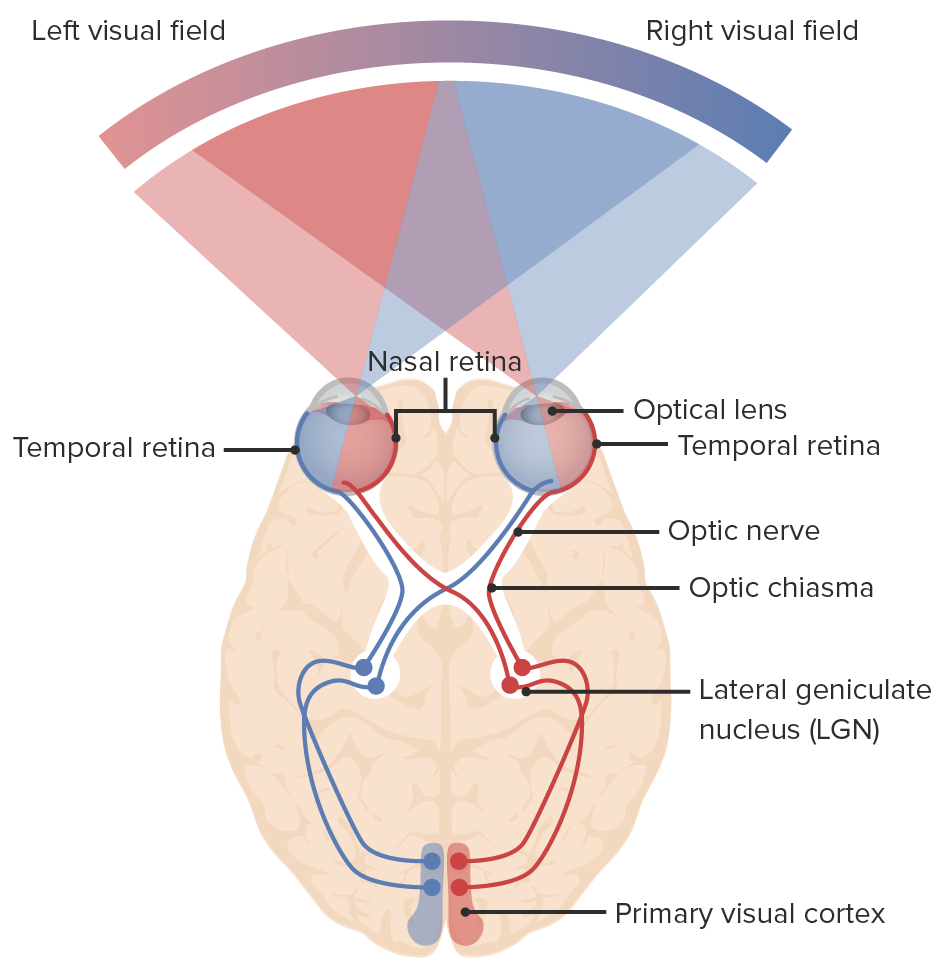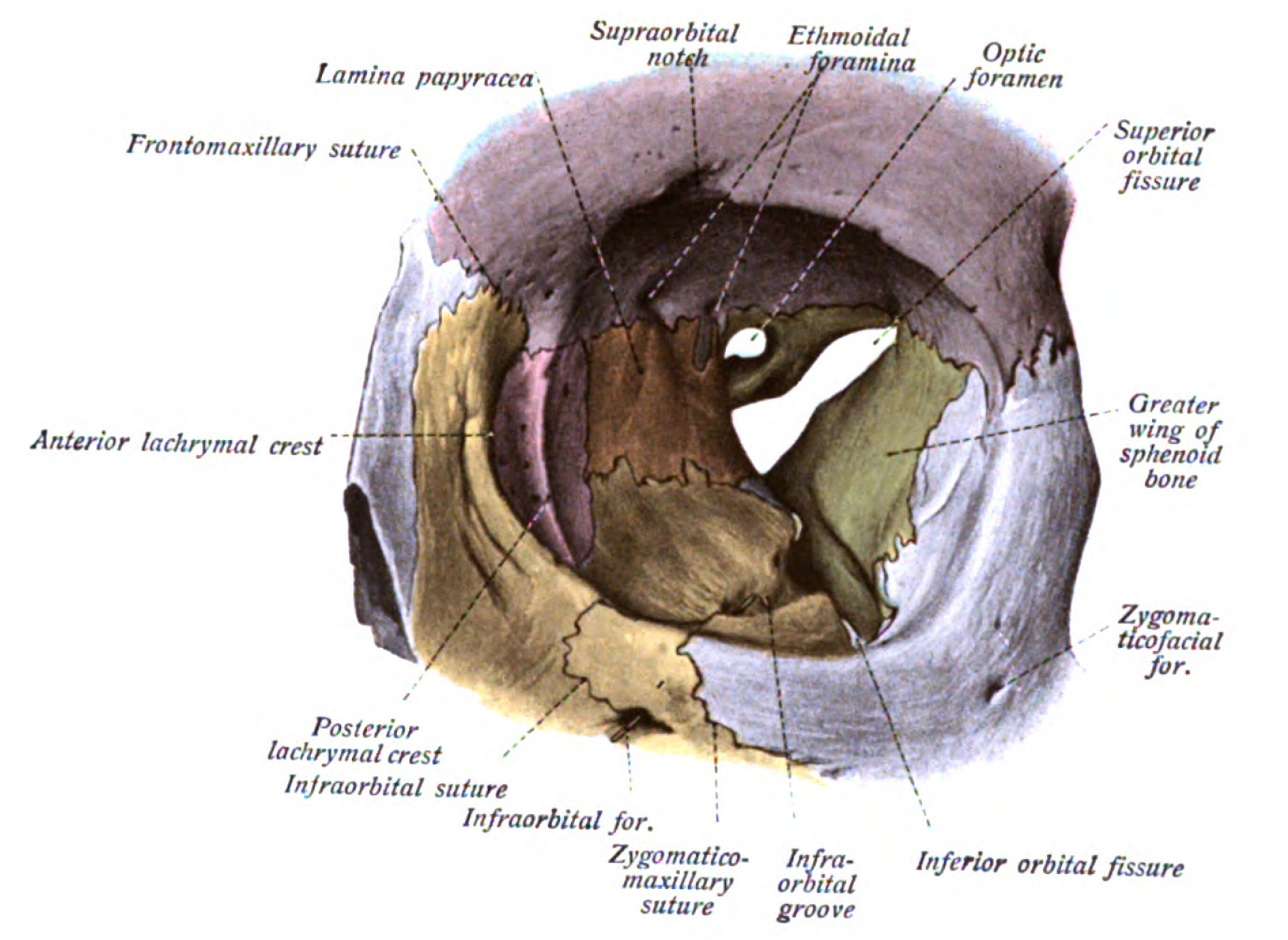Playlist
Show Playlist
Hide Playlist
Vision: Photoreception
-
Slides 02 Vision NervousSystem.pdf
-
Download Lecture Overview
00:00 Light and Photoreceptor Arrangement The reason why this is an important concept is because it seems a bit countering intuitive. 00:11 Light is travelling down towards the pigment epithelium. 00:18 It’s interesting that travels through these cells to get to the photoreceptor layer and the pigment epithelium. 00:27 The pigment epithelium is going to have chromophores in it, very similar to melanin, which is in your skin to absorb light. 00:37 Chromophores again are particles that absorb light. 00:43 Photoreceptors are located just superficial to the pigment epithelium. 00:50 And these will be what are going to respond to those photons of light. 00:56 Some of these here are rods and some of them are cones. 01:00 But both of them will respond to various forms of light. 01:04 But the interesting the light is travelling through all these layers of nerves to get to these particular point. 01:11 Looking at photoreceptors in more detail. 01:14 You can see the rod structure and the cone structure. 01:18 There’s a couple of different segments that we need to highlight here. 01:22 You have the synaptic terminals where are the points that which the photoreceptor will interphase with the bipolar cell. 01:30 You have the inner segments. 01:32 The inner segments have this stuff of the cell. 01:36 The cytoplasm has some the mitochondria, has a nucleus. 01:40 And then you have the outer segments. 01:42 And this is what has these specialized photoreceptor response elements. 01:48 In the rod, they look like little discs. 01:52 In the cone, they look like evaginations. 01:54 And so you can see how they named rods and cones base upon how they look in terms of the histology. 02:01 How they work? So the photoreceptor part in the rod is going to be those discs. 02:10 Those discs have a molecule called rhodopsin in them. 02:14 Rhodopsin is a protein hooked to a retinal molecule. 02:19 So the ups it is the protein and the row is the retinal component. 02:25 Its starts out in this 11-cis retinal configuration bound to the opsin molecule. 02:33 If light is present this 11-cis retinal molecule conformationally change as to an all-trans retinal. 02:44 When these all-trans conversion happens, it causes a further conversion to the rhodopsin molecule and forms this metarhodopsin II. 02:56 These activates a G protein coupled receptor. And this G protein is transducin. 03:04 Transducin activates an enzyme called phosphodiesterase. 03:09 And if you remember what a phosphodiesterase does, it changes either cyclic AMP or cyclic GMP back to its original form. 03:19 In this case 5'-GMP. 03:22 Why this becomes important? Is it decreases cyclic GMP within the cell? Cyclic GMP has an important function. In that, it is linked to sodium channels. 03:38 If you have high levels of cyclic GMP around, you’ll have these sodium channels open to a greater degree. 03:45 If you decrease cyclic GMP, you close these sodium channels. 03:50 The closure of the sodium channels hyperpolarized the photoreceptor membrane. 03:57 Why this is important? The hyperpolarization allows for a greater amount of on versus off component of the photoreceptor. 04:10 So if light is present, you get hyperpolarization. 04:15 If light is absent, you get depolarization. 04:20 That’s a little bit different than some receptors that we have talk about does far in physiology. 04:26 So remember, Light - Hyperpolarizes Dark - Depolarizes
About the Lecture
The lecture Vision: Photoreception by Thad Wilson, PhD is from the course Neurophysiology.
Included Quiz Questions
Sunlight changes the retinal component of rhodopsin into which of the following configurations?
- All-trans retinal
- 11-cis retinal
- Transducin
- 3’ GMP retinal
Where are specialized photoreceptor response elements located in photoreceptor cells?
- Outer segments
- Synaptic terminal
- Inner segments
- Pigment epithelium
- Basal cells
What kind of molecule is transducin?
- G protein
- 11-cis retinal
- All-trans retinal
- Meta-rhodopsin II
- Phosphodiesterase
Which of the following would contribute to the hyperpolarization of the photoreceptor membrane?
- Decrease in cGMP
- Sodium influx
- Increase in cAMP
- Darkness
- Inactive phosphodiesterase
Customer reviews
5,0 of 5 stars
| 5 Stars |
|
2 |
| 4 Stars |
|
0 |
| 3 Stars |
|
0 |
| 2 Stars |
|
0 |
| 1 Star |
|
0 |
Prof. Well done sir, you've done a great job, I'll keep watching your videos
Tone, delivery, ease of comprehension for complex material - perfect. Thank you






